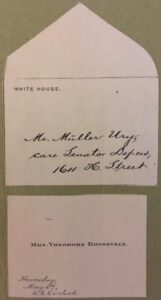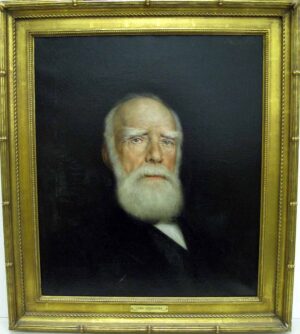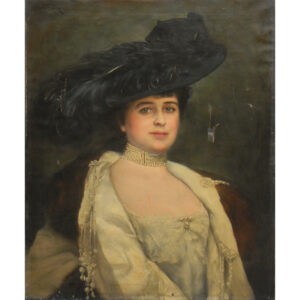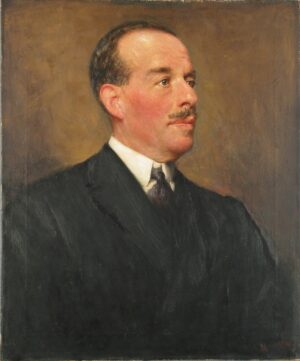Theodore Roosevelt Jr. was born on October 27, 1858 and died on January 6, 1919. He was an American statesman, sportsman, conservationist and writer. He was Vice-President until hurriedly sworn in as 26th President in Buffalo on September 14, 1901 after President McKinley was assassinated. He remains the youngest person to become President of the United States. As a leader of the Progressive Movement he championed his ‘Square Deal’ domestic policies, promising the average citizen fairness, breaking of trusts, regulation of railroads, and pure food and drugs. Making conservation a top priority, he established many new national parks , forests and monuments intended to preserve the nation’s natural resources. In foreign policy, he focussed on Central America, and began construction of the Panama Canal. He expanded the navy and sent the US fleet on a world tour to project the United States’ naval power. His successful efforts to broker the end of the Russo-Japanese War won him the 1906 Nobel Peace Prize. Elected in 1904 to a full term, Roosevelt continued to promote progressive policies, many of which were passed by Congress.
—
It is not known exactly when Muller-Ury painted Theodore Roosevelt (1858-1919), but it may have been during the election campaigns for William McKinley in 1898 or 1902. The picture looks stylistically nearer the latter date.

An invitation to the White House from Mrs Theodore Roosevelt.
There is evidence that he was entertained by the new President in 1902: a card from Mrs. Theodore Roosevelt on which is written ‘Thursday, May 8th, 4 to 6 o’clock’ placed in an envelope embossed with ‘White House’ (and addressed to ‘Mr. Muller-Ury, care Senator Depew, 1611 H Street’) and stuck in the artist’s second scrapbook in 1902, and the fact that the Washington Star, May 11th reported Muller-Ury amongst the guests at a garden party the previous day.
Between February 28 and March 6, 1905 Muller-Ury was in Washington to see the Inauguration of Roosevelt as President (according to a note on a page of his second scrapbook).
In the Times Picayune, New Orleans, Tuesday, October 6, 1942, when he was there to paint the portrait of Mrs. Howard Merrill, Muller-Ury told a reporter that ‘The only time I could not get the feel of a person was in the case of Theodore Roosevelt. He was so carried away with excitement, waving his hands this way and that, talking a mile a minute, that I could never make up my mind about him. And when he saw me again, he referred to me as the only artist who ever refused to paint him.’
In the light of the above information, and the fact that the portrait without spectacles shows Roosevelt with brown eyes not grey-blue, Muller-Ury may well have painted that picture from a photograph.





